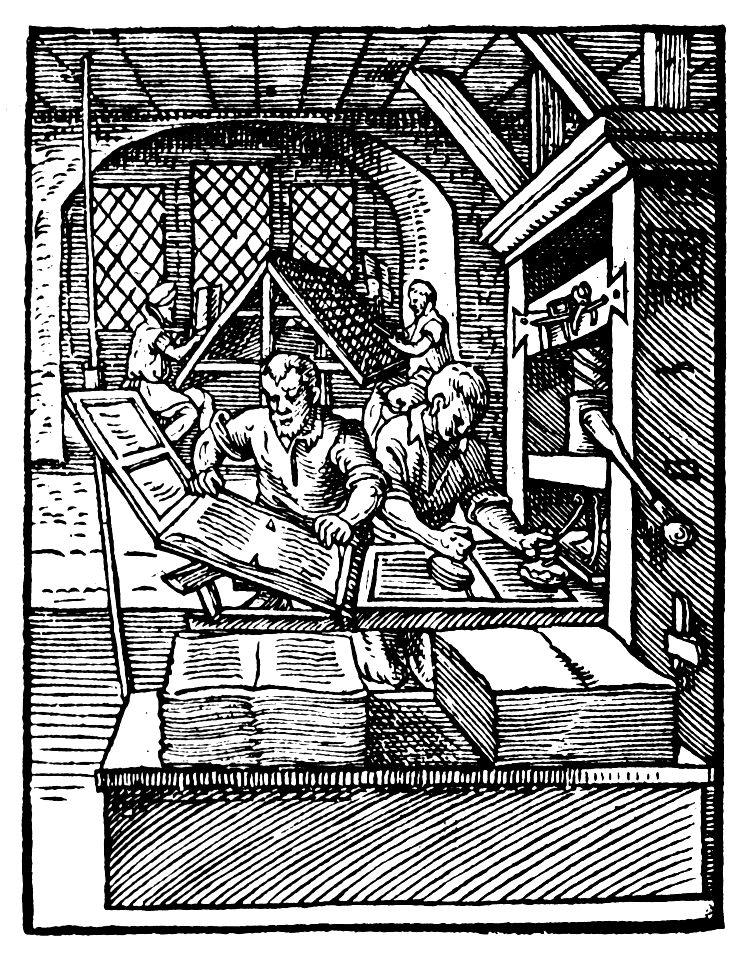What Are Incunabula?

The word "incunabula" is Latin, a neuter plural meaning "swaddling clothes" or "cradle." In book history, it is used to refer to all books printed with metal type from the beginning of Gutenberg's movable type printing press, around 1455, to the end of 1500. This is an arbitrary but traditional date that marks the end of the "infancy" of printing, as it rapidly spread to centers across Europe and into the Americas. Known as "incunables" in Spanish and French (and often in English), "incunaboli" in Italian, and "incunábulos" in Portuguese, these earliest of printed books have long been of great interest to librarians, book collectors, and historians of the book.
Searching for Incunabula
Many libraries catalog their incunabula separately from other books. You may be able to find a separate catalog of incunabula at the institution where you are searching. There are many printed catalogs of the incunabula held in various libraries of particular countries.
Nearly all extant incunabula are listed in the British Library's Incunabula Short Title Catalog. The ISTC uses English versions of the author's name and the city where it was printed. A book listed in a Spanish catalog as being by Tomas de Aquino, Santo and printed in Venetiis will be listed under Thomas Aquinas in the ISTC, with the place of printing being Venice. The title of the book should remain unchanged.
- Incunabula Short Title Catalog (ITSC)The British Library's international catalog records nearly every item printed from movable type before 1501, but not material printed entirely from woodblocks or engraved plates. More than 30,000 editions are listed. Be sure to click the help tab for some useful explanations.

Bibliographies and Catalogs of Incunabula
Most libraries that hold a significant number of incunabula have catalogs available. In addition, many countries and regions have issued catalogs of incunabula held in various libraries there. Incunabula catalogs often contain references to previous incunabula catalogs where the books are mentioned as well as a list of libraries where they are held. Consult the front of the catalog for help decoding these abbreviations.
This is only a sampling of the many incunabula catalogs held in the Regenstein Library.
Catalogs by region
Many union catalogs of incunabula have been produced. These are collective catalogs that list the incunabula held by all libraries in a country or a region of a country, or by all university libraries in that region, and so on. Here are just a few.
- Incunabula in American Libraries: A Third Census of Fifteenth-Century Books Recorded in North American CollectionsFrederick Goff's 1964 catalog of incunabula in private and public libraries, and private collections, in North America. Goff's method of cataloging formed the basis for the British Library's Incunabula Short Title Catalog.
Catalogs by institution
This is just a small sample of the many catalogs that individual institutions have published of their collections of incunabula.
Incunabula Online
Digitizing collections of incunabula allows libraries to preserve these precious collections and reduce future handling of the books themselves. Please refer to the Digitized Collections page of this guide for a longer list, but here are a few collections of particular interest to the budding incunabulist.
- The Munich Digitization CenterThe Bavarian State Library holds the world's largest collection of incunabula, and their digitization project makes more than 8,000 of them available online.
- Austrian National LibraryMore than 2,000 incunabula are currently available in digital reproductions.
- The National Library of SpainCurrently has more than 1,400 digitized incunabula online.
- Keio University Library (Japan)In this digital gallery, all the incunabula are arranged in chronological order of acquisition (not of printing) and are easy to browse.
Gutenberg Bibles
The Gutenberg Bible was the first major book printed using metal movable type. There are around 48 surviving copies. Many libraries that hold copies have created special digital galleries for them, with information about the texts and about the early years of movable type. Here are a few of these projects.
Will I Be Permitted to Peruse Incunabula?
Perhaps. It depends on a number of factors, such as the condition of the book, how many other incunabula the institution holds, and whether or not it has been digitized. It's always a good idea to inquire about access before you travel.
Learn More about Incunabula
- The Atlas of Early PrintingThe University of Iowa Library's map of the spread of printing across Europe, 1450-1500.
- The Dawn of Western Printing: IncunabulaThe Nation Diet Library of Japan's concise and helpful overview includes lists of abbreviations, terminology and other useful information.
- 15th Century BooktradeA project at the University of Oxford to use the material evidence from surviving incunabula to learn more about the distribution and use of printed books and reading practices in the second half of the fifteenth century.
- The Study of IncunabulaKonrad Haebler's classic study is still full of helpful information.

- Incunabula and Their Readers: Printing, Selling and Using Books in the Fifteenth CenturyA collection of essays on specific questions in the study of incunabula.
- Manual de incunablesGives a brief history of printing in Europe followed by detailed descriptions of typography in various regions and other physical characteristics of incunabula.
- Manuale degli incunabuliGives descriptions of typographical differences (with a focus on Italy), and other physical characteristics of incunabula.